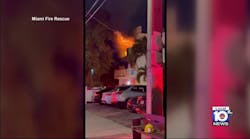Mayor Michael Bloomberg and Office of Emergency Management Commissioner Joseph F. Bruno said the new emergency response system will improve communication between police and fire officials and put the best agencies with the most relevant experience in charge of the right situations.
Police and fire officials have been debating for months how to divide control over emergencies ranging from water rescues to a biological attack.
On Tuesday, current and former police and emergency officials are expected to testify before the Sept. 11 commission about their response to the World Trade Center terrorist attack, which killed almost 3,000 people, including 343 firefighters and 23 NYPD officers.
Critics have said communication failures between police and fire officials hampered rescue efforts on Sept. 11, citing examples like a police warning that the first World Trade Center was about to collapse was not heard by firefighters.
Draft reports prepared for the commission say emergency personnel efforts were not well-coordinated, The New York Times reported Friday. The reports cited poor communication among city police, fire and Port Authority of New York and New Jersey officials, as well as failures of hand-held radios between fire chiefs and firefighters inside the trade center.
Bruno said Friday that the towers' collapse made communication difficult by wiping out the technology that supported the systems. He said the new rules put into writing is what is often followed in practice by both departments.
``99.9 percent of the time, the Police and Fire Department do very well together,'' Bruno said. ``In a very few instances, they have a problem.''
The new system identifies the lead agency in 28 possible emergencies, and said in 10 of the cases that police or fire agencies may take separate control of areas they specialize in.
For hazardous materials incidents, for example, the police department would serve as the lead agency and investigator, while fire officials would be responsible for rescue and decontamination.
The rules for which agency is in charge will not delay rescue efforts, city officials said. ``Life safety operations are the highest priority and will be initiated by the first arriving responders capable of performing rescue,'' stated an OEM release.
The new system is largely based on the national model set up by the Department of Homeland Security, officials said. Related :





